Showing 11–20 of 184 results
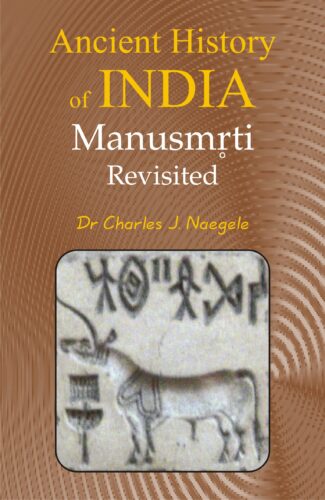
Re-dating and re-interpreting Manusmriti, possibly the oldest law work in the world, the book deals with aspects of Ancient India, including Aryan society and culture, castes and guilds, use of technology and related practices in the Indus Valley Civilisation. It also provides a look at other ancient law codes of the then known world and then compares them with the Manusmriti.
This is a fresh look at the history of Ancient India, centering on the Law Code of Manu (Manusmriti / Manu Dharmashastra), and its relationship to Rigveda and its possible relationship to the Indus/Harappan Civilisation of 4000 to 5000 years ago. It also throws light on Aryan society and culture, castes and guilds, use of technology and related practices in the Indus Valley Civilisation.
Dr. Charles Naegele, a practicing lawyer in Silicon Valley, California, USA, and a lifelong student of classical Indian knowledge, has written a work that will be certain to stir up controversy regarding the re-dating of the Law Code of Manu and the well-documented research concerning almost no possibility of Aryan Invasion Theory and the numerous similarities between the text of the Law Code of Manu and the archeological finds from the Indus/Harappan Civilisation.
Scholars and history buffs, as well as everyone who is proud of Indian heritage will enjoy not only this work, but also his future works.
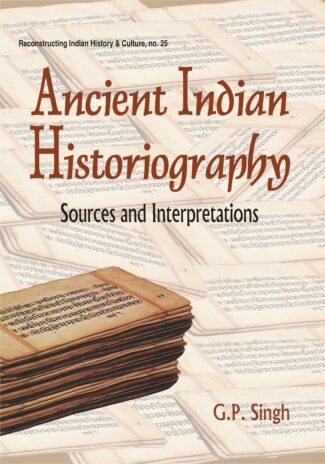
The book deals with the tradition of historiography from the Vedic times to the 12th century ad through a study of Vedic, Epic and Puranic traditions, Buddhist and Jain historiography, ancient dramas and writings of South India. Focusing on biographies, chronicles and vamsavalis, it discusses the social, political and economic conditions in different periods as highlighted by them.
In ancient India, learning and literature flourished at different levels and concerned almost all broad disciplines of knowledge. One such stream was historiography as we find a rich tradition of history-writing maintained over the centuries. This book examines the evolution of the tradition of historiography from the Vedic times to the 12th century ad, arguing against an oft-held belief that ancient Indians lacked a sense of chronology and history. Here, Dr. G.P. Singh highlights the contributions of ancient India to historiography through a critical study of literary works authored by eminent scholars and writers of the past that contain historical writing. Based on research for over two decades, the work elaborately studies Vedic, Epic and Puranic traditions, Buddhist and Jain historiography, historical references and details in the dramas of Kalidasa and Visakhadatta, and historical writing in South India. It pays special attention to writing of historical biographies, chronicles and vamsavalis. It discusses how various religious and other texts throw light on the political and social fabric of different periods and their economic condition and cultural milieu. It frequently refers to the views of modern scholars on various aspects of the historical writings. It looks into the value of the historical writings, the historical conditions under which they were written and the purpose for which written, their language and style, and their immediate impact and influence on writing in later times.The volume will offer fresh approaches to studying ancient Indian historiography and new bases of research on the subject for historians and scholars.

The book examines the affinities and interactions of the peoples who called themselves Arya, that is, the Indo-Aryans and the Indo-Iranians with other peoples and nations of the ancient world. Well-researched and with accurate references to time periods this scholarly work should deeply interest scholars and students of history and anthropology.
In an attempt to explore the ancient history of Central Asia and of the movement of ancient peoples, the work examines the affinities and interactions of the people who called themselves Arya, that is, the Indo-Aryans and the Indo-Iranians, with other peoples and nations of the ancient world, like the Semites, the Hurrians and the Medes. It delves into the processes of acculturation when people of different cultures came in contact with each other at a time that goes back to the very earliest of times (ninth or tenth millennium bce). It examines the movements of the Indo-Aryans and the Indo-Iranians across Asia and their neighbours and active trade partners like the Sumerians, the people of Mesopotamia and the Harappans. It thus throws light on the interactions of the early Indo-Aryans and Indo-Iranians with other flourishing central Asian civilisations of the time. It cites references to ancient traditions that still prevail among peoples in different cultures from different parts of the world, pointing out how these testify to the continuity of ancient traditions and, importantly, the ancient interaction between cultures.
Well-researched and with accurate references to time periods, this scholarly work will deeply interest scholars and students of history and anthropology concerned with the earliest origin of cultures and cultural interactions.
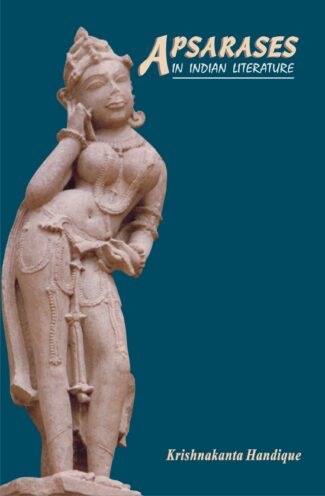
Indian literature abounds in a variety of myths and legends narrating allegorical/historical stories with moral teachings where celestial or semi-celestial beings, in particular the apsarases, occupy an important place. The work examines the origin and development of the institution of apsarases and their characteristics as described in the vast corpus of Vedic, Epic-Puranic and classical works, with a thorough study of the depiction of the legend of the Urvasi and Pururavas.
Indian literature abounds in a variety of myths and legends narrating allegorical/historical stories with moral teachings where celestial or semi-celestial beings, in particular the apsarases, occupy an important place. Of such legends, a few have become much popular and they reappear in the course of the history of literature at various stages. One such legend is that of Urvashi and Pururavas which is one of the most ancient legends of India, owing its origin to the Rigveda. This scholarly work, based on extensive original sources primary, comprising ancient Sanskrit texts, commentaries and glosses and modern literary pieces, kavyas and plays, as well as critical writings on these original works, studies the origin and development of the institution of apsarases and their characteristics as described in the vast corpus of Vedic, Epic-Puranic and classical works. In this context, it undertakes an interesting survey of the concept of nymphs (apsarases) in Indo-European, especially Greek mythology. Dr. Handique then thoroughly examines the depiction of the legend of Urvashi and Pururavas a favourite theme that has been immortalised in literary masterpieces in Indian literature as a whole: from the ancient Vedas and Puranas, the Harivamsha and Vikramorvashiyam to modern works like Urvashi Janani and Abhishapta Urvashi and stray poetic pieces. Presenting a new angle to the study, the book attempts to explore aspects of an age old tradition that bears close affinity with the institution of the apsarases in terms of mode of living worship and ideals like system of the devadasis. The book will prove invaluable to scholars of Indian mythology, culture and literature as well as interest general readers of ancient India’s legends and tales.
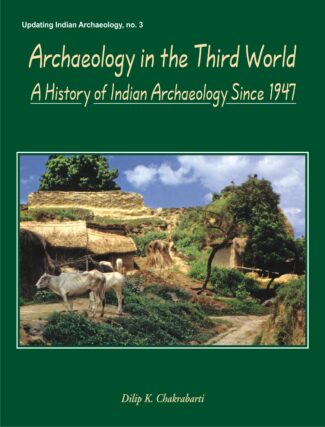
The work studies the evolution of archaeological research in post-independence India: from the new dimensions added to the ancient Indian past by archaeological research in the initial phase to the present era when the national archaeological policy seems to have lost its direction. It highlights the mileposts in its course of development and explores the traits of third world archaeology.
This book offers an authoritative historical frame of archaeological research in post-Independence India. It outlines the early evolution of the new Indias archaeological policy and the wide range of discoveries, which accompanied it. It shows how in the first flush of Independence archaeological research added new depths and dimensions to the ancient Indian past. It also looks closely at the tangled web of ideas behind this research, highlighting the major mile-posts in its story of development. At the same time it demonstrates with unerring clarity how the national archaeological policy of the 1950s and the 1960s has currently lost its direction. This is accompanied by an incisive analysis of different aspects of Indian heritage management, including the impact of religious fundamentalism, the looting of antiquities and the place of archaeology in Indian education. Finally, there is a detailed discussion on the scope of nationalist archaeology in India. One of the core arguments of the book is that the developments and features of post-Independence Indian archaeology may be representative of the archaeological scenario of the Third World as a whole. In fact, this is the first book to set down clearly the basic traits of Third World Archaeology and argue for its acceptance as a separate conceptual area in mainstream archaeology.

This book delves into the rich antiquity of Mayurbhanj as evident in its archaeological discoveries. It discusses how the patronage of enlightened rulers helped archaeologist-scholars like K.P. Bose to unravel Mayurbhanjs ancient wealth.
Mayurbhanj, the leading princely state of Orissa in the pre-independence days, heroically encountered the twists and turns of history under the peacock-emblemed Bhanjas and continued to flourish for many centuries as an independent sub-regional kingdom, enriching Orissan history and culture in the tribal-dominated region. Today, the splendour of ancient Mayurbhanj (Khijjinga mandala) can be sought in its archaeological treasures that is, fascinating Stone Age tools, copper plate inscriptions, Roman, Kushana and Gupta coins, and spectacular monuments with intricate sculptural work. Professor P.K. Mishra, in this book, attempts to delve into the rich antiquity of Mayurbhanj as evident in its archaeological discoveries that have had a great impact on Orissan culture. The author discusses how under the patronage of enlightened rulers like Maharaja Sriramachandra Bhanj Deo and Purna Candra Bhanj Deo, committed archaeologist-scholars like Kamakshya Prasad Bose, R.P. Chanda, Sailendra Prasad Bose undertook pioneering and painstaking efforts to lay bare Mayurbhanjs ancient wealth. He unfurls the story of Mayurbhanjs discovery in a vivid and interesting account while, at the same time, providing new light on the archaeological excavation and conservation. This work, explaining the rich, intricate past of an area of historical importance, is bound to inspire as well as provide useful information to scholars and researchers involved in Indian history. A very lucid language with constant flow and about 50 photographic representations enhance the value of the book.

The book begins with an introduction on the prehistoric and proto-historic cultures of India and discusses human evolution as gathered from hominid fossil remains. It also examines the nature of cultural relics belonging to each period and dynastic rule; agriculture, trade, settlement and migration patterns related to making, use and spread of art materials; and social and religious aspects of society that are revealed by the art and architecture of the periods.
The book begins with an introduction on the prehistoric and proto-historic cultures of India. Well-known historians discuss human evolution as gathered from hominid fossil remains, pre-human hominid remains of the Siwaliks and fossil remains of the Narmada basin. The systematic study, mentioning the areas of finds and their geography and other characteristics, examines the nature of cultural relics belonging to each period and dynastic rule; agriculture, trade, settlement and migration patterns related to making, use and spread of art materials; how the finds reflect upon rise of craft and industrial centers at the time; and social and religious aspects of society that are revealed by the art and architecture of the periods. Importantly, it reveals the interchange of cultural thoughts and lifestyles and of art and architectural influences; and the synthesis of artistic style and materials as evident in especially the periods of Muslim rule in India. The book also features fossil finds, art and architectural materials pertaining to painting, pottery, sculpture and iconography, and literary materials like Persian documents housed in the Indraprastha Museum of Art and Archaeology, New Delhi. The materials date from the stone ages, Indus-Saraswati Civilization and Chalcolithic period to what are commonly identified as the ancient medieval and modern periods of Indian history. The volume will be useful to scholars and students of various disciplines history, archeology, art and culture, and sociology.
“An assemblage of twenty-six scholarly essays: in honour of Dr Kapila Vatsyayan, the book attempts to conjure up the integral vision of art — exploring, as it does, the underlying unity of different disciplines. Written by distinguished Indian and foreign scholars: artists, art historians, archaeologists, anthropologists, scientists, philosophers and litterateurs, who have shared or subscribed to Dr Vatsyayan’s holistic vision of arts, these essays look for the linkages that have existed within the arts, between the arts, and across the cultures — focusing, contextually, on the form, the content, and the vision of art in terms of time and space. With at once stimulating alternative viewpoints available to humankind today, the authors consider space, time and consciousness as they are related to, and expressed in, metaphor, symbol and creative process. Together with cross-cultural comparisons of art, the book also explores the future of man as an artist. Art: The Integral Vision, besides the Editors’ Introduction giving an overview on the presentations, is blessed by His Holiness the Dalai Lama’s personal message. A foremost authority on Indian art and culture, Dr Kapila Vatsyayan is well-known to all serious scholars of art history, religion, philosophy and cosmology. A prolific author and recipient of several honours, including the prestigious Padma Shree (1990) and Padma Vibhushan (2011), she has convincingly spelt out the unifying principles of cultural plurality and the interdependence and interrelatedness of creative arts. This holistic vision — unmistakably manifest in her writings — has come to finest fruition in her setting up (in 1985) the Indira Gandhi National Centre for the Arts (IGNCA), New Delhi. This is a fascinating book for wide-ranging specialists and students interested in the mathematical, geometrical, metaphysical, astrophysical, cosmological, philosophical, psychological, historical, mythological and metaphorical understanding of art, especially the Indian art.”

This book gives exhaustive and valuable insights into all aspects of the artisans and craftsmen of northern India who played a key role in the evolution of life between the seventh and twelfth centuries ce. This critical study examines the socio-economic conditions of the various categories of workers in stone, metal, clay, leather, cotton, salt, and other industries.
The basic aim of the book is to expose the major contributions of artisans and craftsmen in portraying the society in different perspectives. These artisans and craftsmen, were drawn mostly from the shudras, lower caste of the community, suppressed and have-nots section of the society, but were highly talented. The work is also designed to create interest among the reader and scholars alike, to understand the society of the period under reference through the immortal art of these creative people. The artisans such as potters, weavers, carpenters, architects, sculptors, brick-makers, metallurgy and metal workers, leather workers, painters, and the workers engaged in the profession of ivory, glass and mirror, perfume and cosmetic, musical instrument, oil, salt and liquor makers, etc. were the heroes of that time, who not only met the day-to-day requirement of the then society, but also portrayed different aspects of their life, in its true color, through their workmanship. It was the architect who designed and constructed houses to live in, as well as water tank, well and channel, royal building, stupa, temple and fort, bridge, pillar and rock-edict etc., which met the need of the society.
Today, we feel proud of the rich heritage of old Indian art and architecture, credit for which solely goes to the then artisan who crafted immortal creations. However, the invaluable contribution made by the historians in immortalizing their creations, by putting them in black and white, is no less important. It is the historian, whose mighty pen has immortalized not only Ashoka the great, as a king but also the creators of the stupas of his times on equal footings. It is with this aim in view that the present book has been presented to the posterity, in order to pay rich tributes to the creators of our rich cultural heritage.
Unluckly there was no proper institutionalized provision for the education of artisans and craftsmen, so generally the former adopted the occupation of their parents and hereditary skill was enhances as it was transferred from father to son, and generation to generation. Contemporary sources reveal that the social stautus of artisan class was based on the nature and economic conditions of a particular profession.
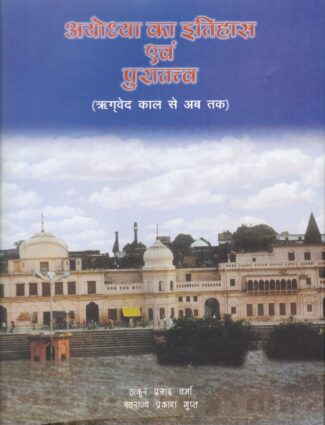
T.P. Verma and S.P. Gupta, after several years toil, have here presented the history of Ayodhaya in a chronological form from Rgveda times till today which has been proved with the evidences from archaeology, coinages, scriptures, etc.
T.P. Verma and S.P. Gupta, after several years toil, have here presented the history of Ayodhaya in a chronological form from Rgveda times till today which has been proved with the evidences from archaeology, coinages, scriptures, etc.
| There are no products |